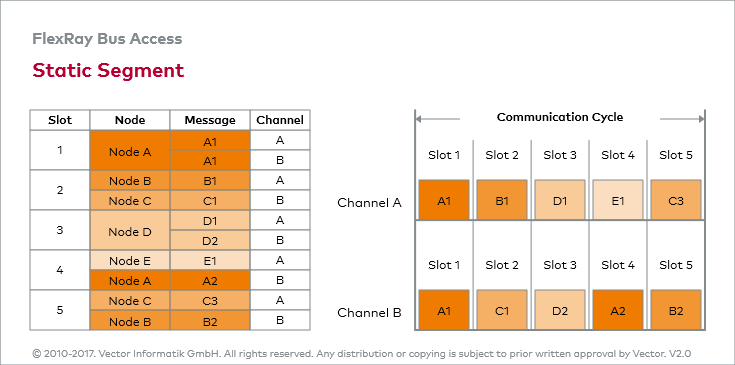Static Segment
Within the FlexRay communication cycle, the static segment assumes a prominent role: it is what assures the equidistant data transmission that is so important for the distributed control systems being implemented. This is guaranteed by the TDMA method underlying the static segment.
The static segment is organized into a number of time slots (static slots) of equal length. The FlexRay nodes assigned to the static slots can transmit the static messages assigned to the static slots during periodic communicative operation. The precondition for this process are synchronized local counters, each of which are incremented at the beginning of a static slot. The counter value refers to a specific static message and FlexRay node.
The figure “Static Segment” shows a communication schedule for two channels (Channel A and Channel B). The same message is transmitted in the first slot on both channels. Failure of one channel does not result in the message not being transmitted. However, the redundant communication channel might be used to increase the data rate instead of increasing fault tolerance. This is precisely the approach taken in the other slots of the static segment: different messages are transmitted on the two channels. The choice between fault tolerance and increased data rate can be made independently for each individual FlexRay message.
A maximum of 1023 static slots may be defined. Because at least two FlexRay nodes are needed to generate the global time base, the static segment must consist of at least two static slots which are assigned to the FlexRay nodes.

